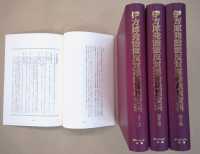- ホーム
- > 洋書
- > 英文書
- > History / World
Full Description
Drawing on recent archaeological and historical research, this book presents the fascinating developments in the archaeology of prehistoric societies of mainland Southeast Asia.
Empires of the Southern Ocean offers a sweeping and authoritative account of the emergence, expansion, and transformation of early state-level societies across the regions that today encompass Myanmar, Malaysia, Indonesia, Cambodia, Thailand, and Vietnam. Spanning from the late prehistoric period to the mid-15th century, the book traces the dynamic rise of polities that shaped Southeast Asia's early urban and political landscapes, including the Pyu and Pagan in Myanmar; the entrepôt settlements of peninsular Malaysia; Srivijaya, Sanjaya, and Majapahit in Indonesia; Funan, Chenla, and Angkor in Cambodia; Dvaravati in Thailand; and Linyi, Champa, and Ðai Viet in Vietnam.
Drawing on the most current archaeological, epigraphic, and paleoenvironmental research, the book challenges outdated, India-centric narratives and instead presents a nuanced understanding of Southeast Asia's indigenous political developments, cross-cultural exchanges, and technological innovations. It highlights the region's participation in long-distance trade networks across the Indian Ocean and South China Sea, and examines the role of religion, writing systems, and monumental architecture in legitimizing early power structures.
The volume includes a chapter on models of political development theory, critically examining how concepts such as heterarchy, segmentary states, and mandala systems apply—or fail to apply—to the Southeast Asian context. This theoretical grounding informs the subsequent case studies, offering readers a framework for understanding the diverse pathways to complexity taken by early Southeast Asian polities.
Combining detailed regional studies with broader comparative insights, Empires of the Southern Ocean is essential reading for anyone interested in the complex trajectories of early state formation in Southeast Asia and the interconnected histories of the ancient world.
Contents
Chapter 1: Introduction
Chapter 2: Models of Political Development
Chapter 3: Sociopolitical Change in Early Southeast Asia
Chapter 4: The Pyu (Tircul), Arakan and Bagan
Chapter 5: The Mon Protostates: Dvaravati and Myanmar
Chapter 6: Peninsular Southeast Asia
Chapter 7: Insular Southeast Asia
Chapter 8: Pre-Angkorian Polities
Chapter 9: Angkor
Chapter 10: Champa and Ða?i Viê?t
Conclusion
References








